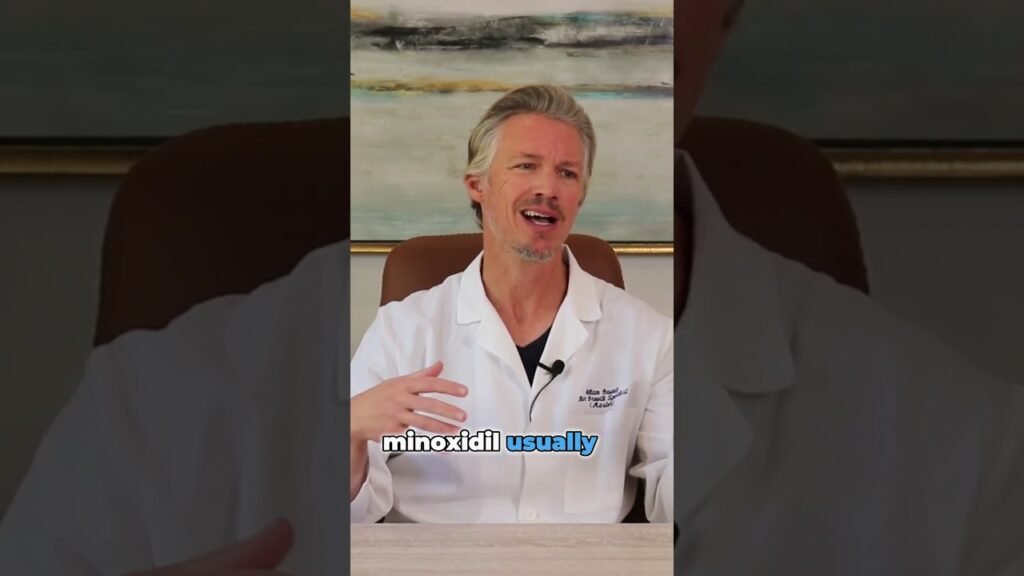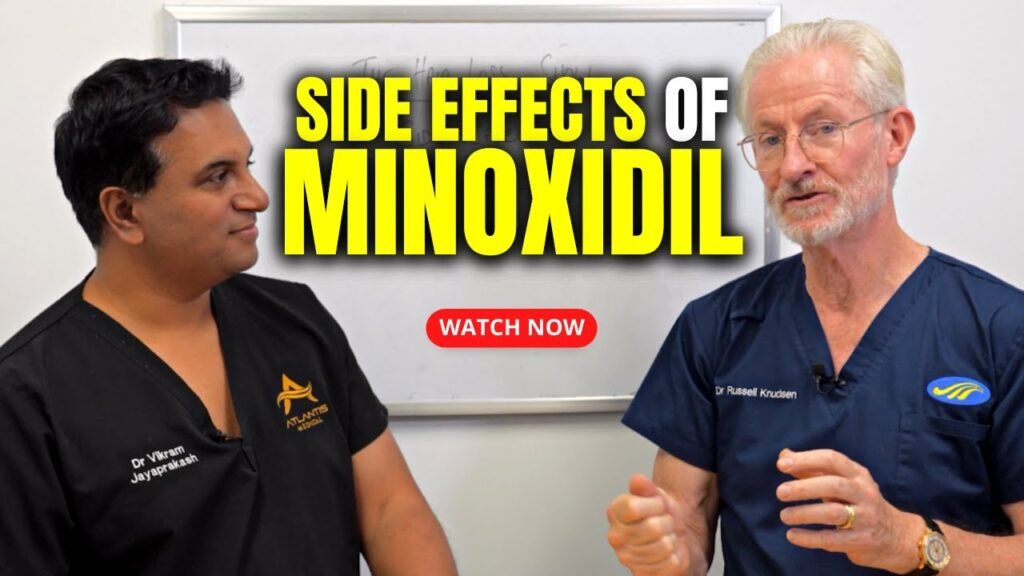Understanding Minoxidil: What It Is and How It Works
Minoxidil is a well-known medication primarily used for promoting hair growth and treating hair loss conditions like androgenetic alopecia. Originally developed as an oral medication for hypertension, its hair growth side effects led to the development of topical formulations specifically for hair loss. Available in liquid and foam forms, minoxidil is typically applied directly to the scalp, making it a convenient and non-invasive option for those seeking to address thinning hair.
How Minoxidil Works
The exact mechanism by which minoxidil promotes hair growth is not entirely understood, but it is believed to work by prolonging the anagen phase of the hair growth cycle. The anagen phase is the active growth phase, and by extending its duration, minoxidil allows hair follicles to produce longer and thicker strands. Additionally, minoxidil may improve blood flow to the hair follicles, delivering essential nutrients and oxygen that can stimulate hair growth.
Key Benefits of Minoxidil:
- Clinically proven to promote hair growth in many users.
- Available over-the-counter in various strengths.
- Suitable for both men and women experiencing hair thinning.
While minoxidil is effective for many individuals, it is important to note that results can vary. Consistent application is crucial, as stopping the treatment can lead to a reversal of hair growth benefits. Users may start noticing improvements within a few months of regular use, but it can take up to a year to see the full effects. Always consult with a healthcare professional before starting any new treatment to ensure it is appropriate for your specific needs.
The Connection Between Minoxidil and Acne: What You Need to Know
Minoxidil, a popular over-the-counter medication used for hair regrowth, is often associated with various side effects, one of which includes the potential for acne development. While not everyone using minoxidil will experience acne, it is essential to understand the underlying reasons for this possible side effect. The primary mechanism through which minoxidil might contribute to acne involves its influence on skin and hair follicles. As a vasodilator, minoxidil increases blood flow to hair follicles, potentially leading to increased oil production in the scalp and surrounding skin areas, which can, in turn, contribute to acne formation.
Understanding How Minoxidil May Cause Acne
The application of minoxidil can sometimes lead to changes in the skins oil production. When excess oil, also known as sebum, is produced, it can clog pores and create an environment conducive to acne-causing bacteria. Furthermore, some formulations of minoxidil contain alcohol, which can dry out the skin, prompting the skin to produce more oil to compensate for the dryness. This rebound oiliness can exacerbate acne conditions, particularly in individuals who are already prone to breakouts.
Identifying and Managing Acne Related to Minoxidil Use
If you suspect that minoxidil is contributing to your acne, there are several steps you can take to manage this side effect. First, consider using a formulation with a lower concentration of alcohol or switching to a foam version, which might be less irritating than the liquid form. Its also beneficial to maintain a consistent skincare routine that includes cleansing the affected areas with a gentle, non-comedogenic cleanser. Avoiding oil-based skincare products can also help reduce the risk of further clogging pores. Consulting with a dermatologist can provide additional insights and tailored solutions for managing acne while continuing hair loss treatment with minoxidil.
Common Side Effects of Minoxidil: Acne and Beyond
Minoxidil, a popular over-the-counter treatment for hair loss, is generally well-tolerated, but like any medication, it can have side effects. One of the more unexpected reactions is the development of acne. Users may notice breakouts in areas where the product is applied, particularly on the scalp, forehead, or even back. This occurs as the skin reacts to the formulation, which can sometimes clog pores or irritate sensitive skin. To minimize this effect, its crucial to apply minoxidil precisely as directed, avoiding excess application and ensuring the product is thoroughly washed off any areas of unintended contact.
Beyond acne, there are other side effects that users should be aware of. Some individuals report experiencing a dry, itchy, or flaky scalp. This is often due to the alcohol and propylene glycol found in many minoxidil formulations, which can strip moisture from the skin. To combat dryness, users can incorporate a gentle, hydrating shampoo and conditioner into their routine. For those with sensitive skin, opting for a foam formulation, which typically contains fewer irritants, might be beneficial.
Additional Side Effects to Monitor
Apart from dermatological reactions, minoxidil can lead to other side effects. Some users may experience unwanted facial hair growth, particularly in women. This occurs when minoxidil inadvertently comes into contact with areas beyond the scalp. Ensuring precise application can help mitigate this risk. Other less common side effects include dizziness, rapid heartbeat, and swelling in the hands or feet. While these are rarer, they warrant immediate medical attention if they occur. Always consult with a healthcare provider to discuss any concerns or persistent side effects associated with minoxidil use.
Managing Acne While Using Minoxidil: Tips and Advice
For individuals using minoxidil, a common concern that may arise is the development of acne. Minoxidil, primarily known for its effectiveness in treating hair loss, can sometimes lead to skin issues, including acne, due to its potential to increase oil production in the skin. To manage this, its crucial to adopt a skincare routine that addresses both hair growth and acne prevention. Start by choosing a gentle, non-comedogenic cleanser that helps remove excess oil without clogging pores. This can be particularly beneficial in preventing acne flare-ups while continuing minoxidil treatment.
Incorporating a balanced diet rich in vitamins and minerals can also support skin health while using minoxidil. Foods high in antioxidants, such as fruits and vegetables, can help reduce inflammation and improve skin resilience. Additionally, staying hydrated by drinking plenty of water throughout the day can assist in flushing out toxins that may contribute to acne. Consider integrating supplements like zinc or omega-3 fatty acids, known for their anti-inflammatory properties, into your routine after consulting with a healthcare professional.
To further manage acne, it is important to avoid touching your face frequently and to keep your hair clean and away from your skin, as minoxidil can transfer from hair to skin and exacerbate acne. If acne persists, you might want to explore topical treatments containing salicylic acid or benzoyl peroxide, which can effectively target acne without interfering with minoxidils efficacy. Always patch test new products to ensure they dont cause additional irritation. If over-the-counter solutions prove ineffective, consulting a dermatologist can provide personalized advice and possibly prescription treatments tailored to your specific skin type and condition.
When to Consult a Dermatologist About Minoxidil and Acne Concerns
Experiencing unexpected skin reactions while using minoxidil, particularly acne breakouts, can be concerning and might necessitate a consultation with a dermatologist. Minoxidil, primarily used for hair growth, can sometimes trigger skin issues, including acne, due to its formulation or the bodys response to the medication. If you notice a sudden onset of acne after starting minoxidil, its advisable to seek professional advice. A dermatologist can help determine whether the acne is a direct result of minoxidil use or if other underlying factors might be contributing to the skin changes.
Its crucial to monitor the severity and persistence of acne when using minoxidil. If the acne becomes painful, cystic, or does not improve with over-the-counter treatments, a dermatologists input is essential. They can assess whether adjustments in your skincare routine or modifications to your minoxidil application might alleviate the issue. In some cases, dermatologists might recommend alternative hair growth treatments that are less likely to provoke acne or suggest specific acne treatments that can be safely used alongside minoxidil.
Additionally, individuals with a history of sensitive skin or pre-existing acne conditions should consider consulting a dermatologist before starting minoxidil. A professional can provide tailored advice and preventive measures to minimize the risk of acne flare-ups. Proactive consultation can help ensure that your skin health is managed effectively while achieving your hair growth goals.


